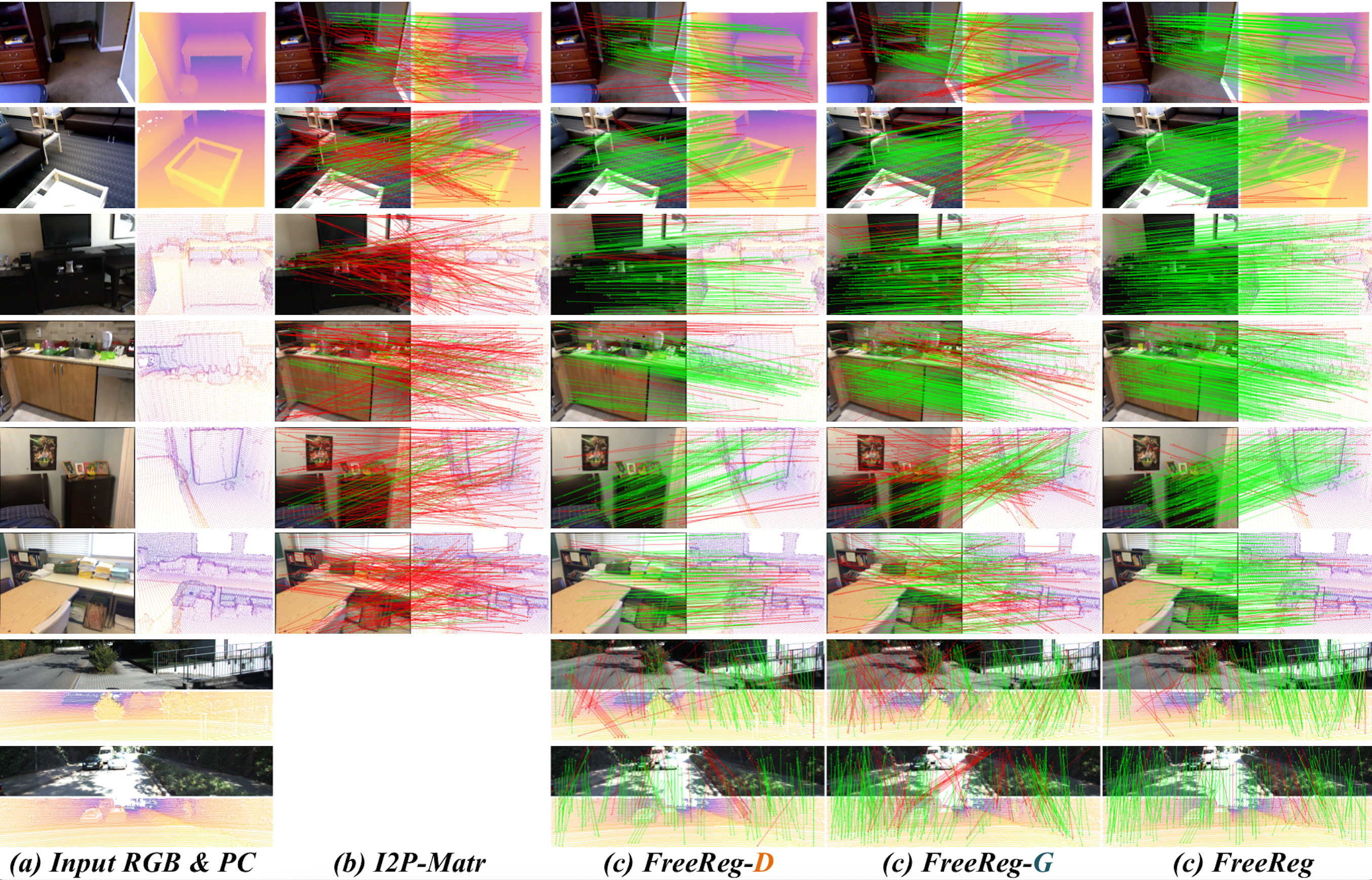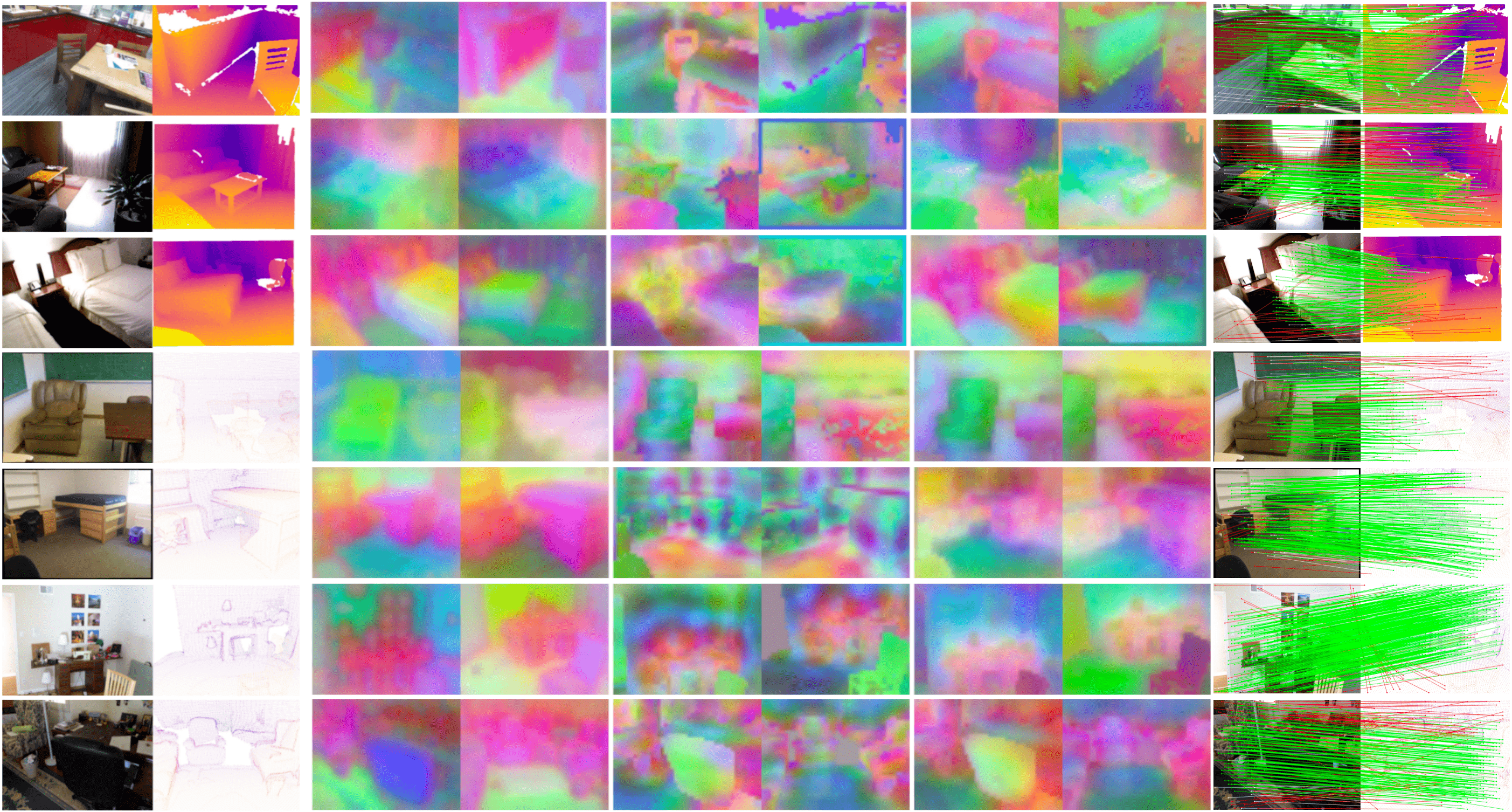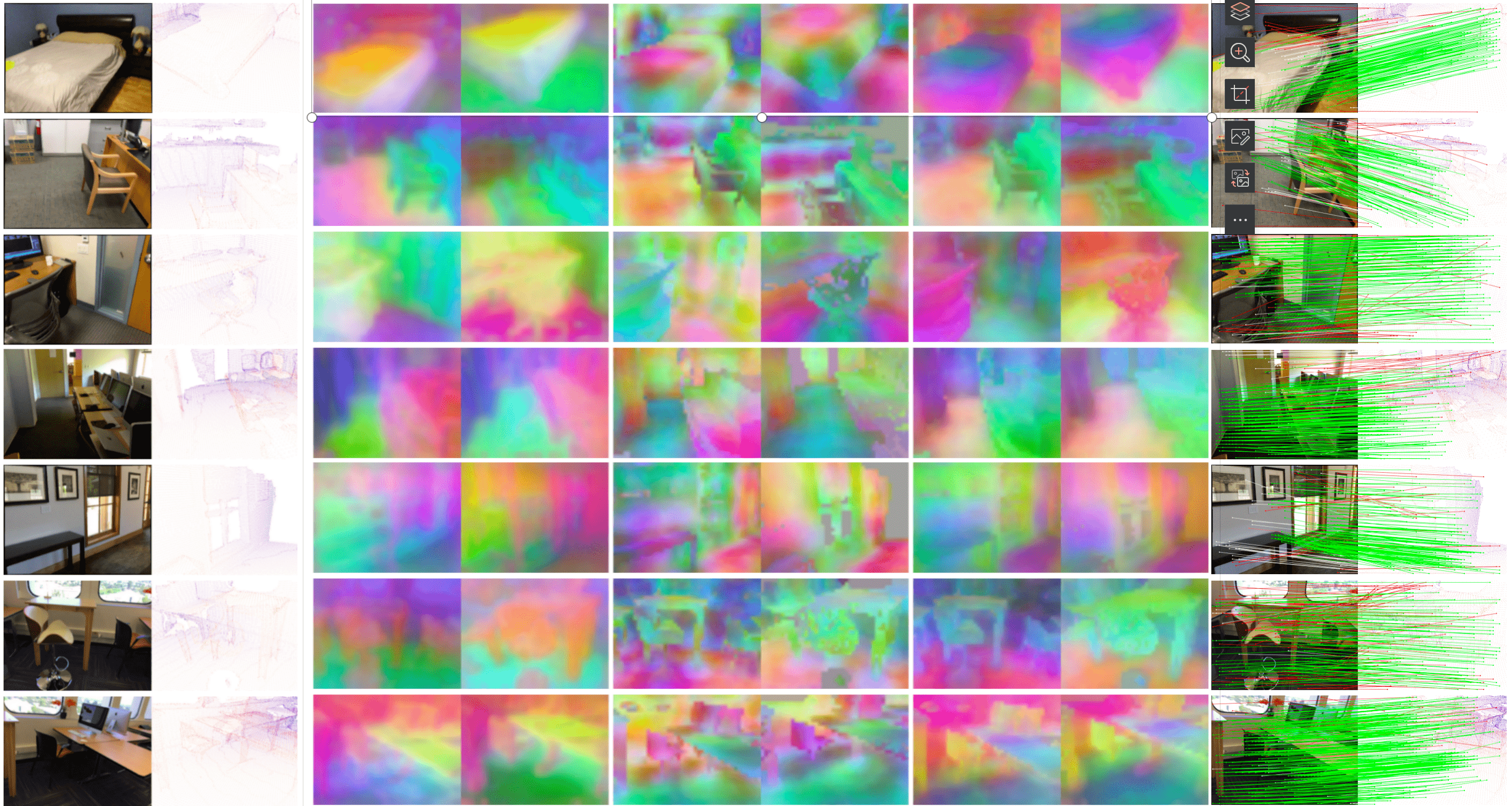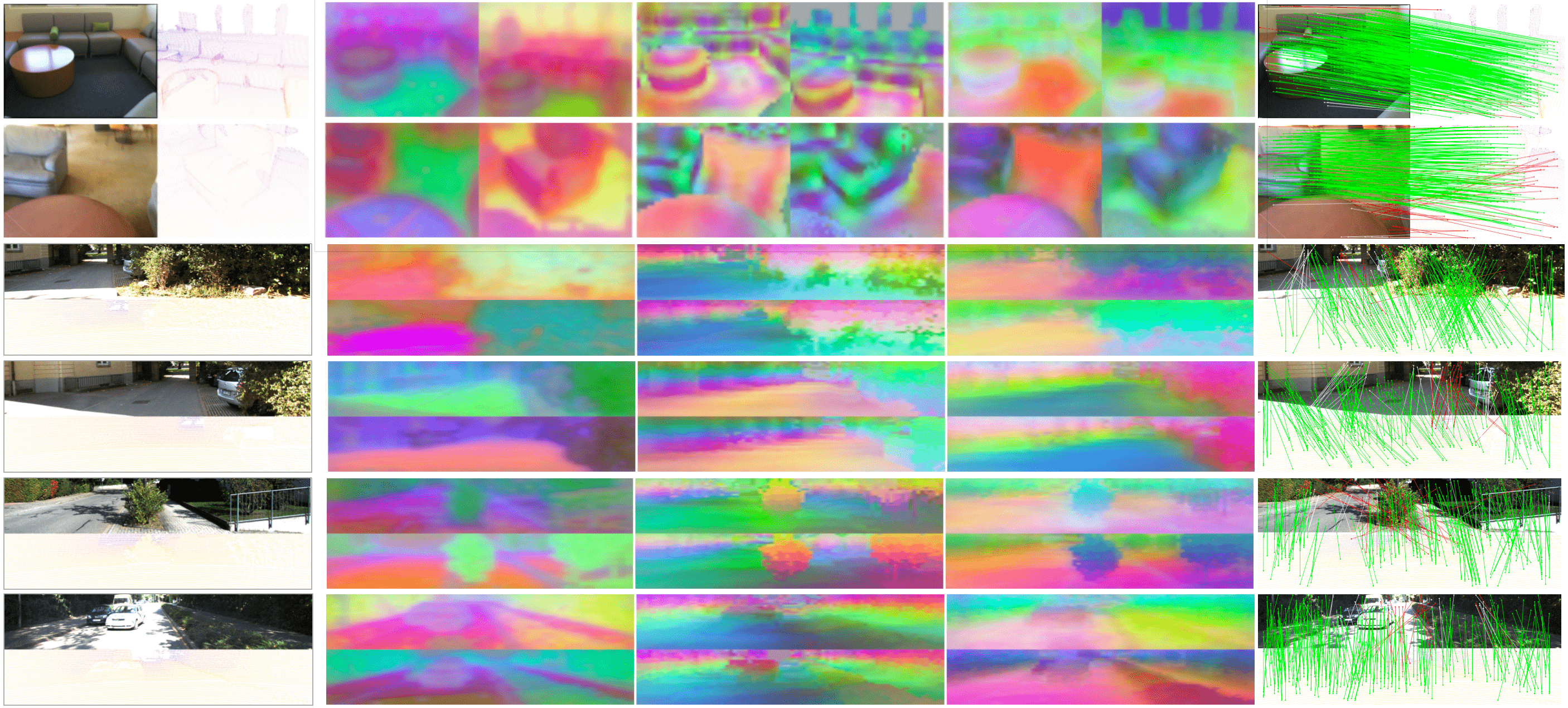Abstract
Matching cross-modality features between images and point clouds is a fundamental problem for image-to-point cloud registration.
However, due to the modality difference between images and points, it is difficult to learn robust and discriminative cross-modality features by existing metric learning methods for feature matching.
Instead of applying metric learning on cross-modality data, we propose to unify the modality between images and point clouds by pretrained large-scale models first, and then establish robust correspondence within the same modality.
We show that the intermediate features, called diffusion features, extracted by depth-to-image diffusion models are semantically consistent between images and point clouds, which enables the building of coarse but robust cross-modality correspondences.
We further extract geometric features on depth maps produced by the monocular depth estimator. By matching such geometric features, we significantly improve the accuracy of the coarse correspondences produced by diffusion features.
Extensive experiments demonstrate that without any task-specific training, direct utilization of both features produces accurate image-to-point cloud registration.
On three public indoor and outdoor benchmarks, the proposed method averagely achieves a 20.6% improvement in Inlier Ratio, a three-fold higher Inlier Number, and a 48.6% improvement in Registration Recall than existing state-of-the-arts.
The codes are available in the supplementary material and will be released upon acceptance.
Acknowledgements:
We borrow this template from A-tale-of-two-features.




